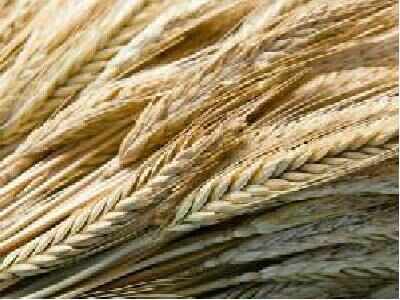- News
- India News
- Foodgrain output up despite scant rainfall in 2015-16
Trending
This story is from August 3, 2016
Foodgrain output up despite scant rainfall in 2015-16
The total production still crossed the 2014-15 figures mainly due to higher wheat production, reflecting a degree of resilience of Indian agriculture to a deficit monsoon in the areas having proper irrigation infrastructure like in northwest India. However, pulses production reported a decline.

Representative image.
NEW DELHI: Despite deficient rainfall and shortage of water in reservoirs last year, India's foodgrain production in 2015-16 is estimated to be slightly higher than the total production in 2014-15 -thanks to irrigated areas of northwest India where good wheat production more than made it up. However, pulses remain a major worry as its production reported a decline.
In fact, production of most of the crops, including rice, pulses and oilseeds, is estimated to be lower in 2015-16 crop year (July-June) than their production in 2014-15.
The total production still crossed the 2014-15 figures mainly due to higher wheat production, reflecting a degree of resilience of Indian agriculture to a deficit monsoon in the areas having proper irrigation infrastructure.
The agriculture ministry on Tuesday came out with its fourth advance estimates of foodgrain production for 2015-16, showing that the production in the year stand at 252.22 million tonnes as compared to 252.02 million tonnes (MT) in 2014-15 that was also the drought year. Though the deficiency in Mon soon rainfall in 2015 was higher than the deficiency in 2014, the year 201516 managed to cross the previous year's production mark due to timely contingency measures during Rabi (winter crop) season that resulted in higher production of wheat.
On the other hand, the production of pulses in 2015-16 (16.47 MT) is estimated to be slightly lower than its production in 2014-15 (17.15 MT) -a cause of concern as India has to depend heavily on import to meet its domestic demand.
Since pulses are mainly sown in rain-fed areas, decline in its production is attributed to deficit rainfall in 2015 when as many as 11states were drought-hit. Nearly all major pulse growing states such as Madhya Pradesh, Maharashtra, Rajasthan, Uttar Pradesh and Karnataka had faced severe drought.
The overall production in both the years was, however, way below the 2013-14 mark when the country had achieved a record foodgrain production of 265.04 milliontonnes.
In fact, production of most of the crops, including rice, pulses and oilseeds, is estimated to be lower in 2015-16 crop year (July-June) than their production in 2014-15.
The total production still crossed the 2014-15 figures mainly due to higher wheat production, reflecting a degree of resilience of Indian agriculture to a deficit monsoon in the areas having proper irrigation infrastructure.
The agriculture ministry on Tuesday came out with its fourth advance estimates of foodgrain production for 2015-16, showing that the production in the year stand at 252.22 million tonnes as compared to 252.02 million tonnes (MT) in 2014-15 that was also the drought year. Though the deficiency in Mon soon rainfall in 2015 was higher than the deficiency in 2014, the year 201516 managed to cross the previous year's production mark due to timely contingency measures during Rabi (winter crop) season that resulted in higher production of wheat.
The production of wheat, estimated at 93.50 MT in 2015-16, is higher by 6.97 MT than the production of 86.53 MT during 2014-15.
On the other hand, the production of pulses in 2015-16 (16.47 MT) is estimated to be slightly lower than its production in 2014-15 (17.15 MT) -a cause of concern as India has to depend heavily on import to meet its domestic demand.
Since pulses are mainly sown in rain-fed areas, decline in its production is attributed to deficit rainfall in 2015 when as many as 11states were drought-hit. Nearly all major pulse growing states such as Madhya Pradesh, Maharashtra, Rajasthan, Uttar Pradesh and Karnataka had faced severe drought.
The overall production in both the years was, however, way below the 2013-14 mark when the country had achieved a record foodgrain production of 265.04 milliontonnes.
End of Article
FOLLOW US ON SOCIAL MEDIA











